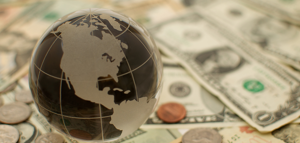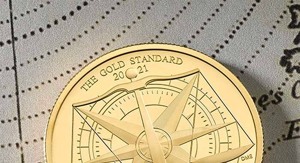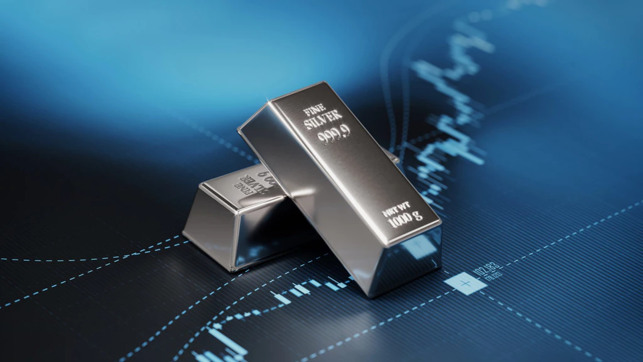Tavex uses cookies to ensure website functionality and improve your user experience. Collecting data from cookies helps us provide the best experience for you, keeps your account secure and allows us to personalise advert content. You can find out more in our cookie policy.
Please select what cookies you allow us to use
Cookies are small files of letters and digits downloaded and saved on your computer or another device (for instance, a mobile phone, a tablet) and saved in your browser while you visit a website. They can be used to track the pages you visit on the website, save the information you enter or remember your preferences such as language settings as long as you’re browsing the website.
| Cookie name | Cookie description | Cookie duration |
|---|---|---|
| tavex_cookie_consent | Stores cookie consent options selected | 60 weeks |
| tavex_customer | Tavex customer ID | 30 days |
| wp-wpml_current_language | Stores selected language | 1 day |
| AWSALB | AWS ALB sticky session cookie | 6 days |
| AWSALBCORS | AWS ALB sticky session cookie | 6 days |
| NO_CACHE | Used to disable page caching | 1 day |
| PHPSESSID | Identifier for PHP session | Session |
| latest_news | Helps to keep notifications relevant by storing the latest news shown | 29 days |
| latest_news_flash | Helps to keep notifications relevant by storing the latest news shown | 29 days |
| tavex_recently_viewed_products | List of recently viewed products | 1 day |
| tavex_compare_amount | Number of items in product comparison view | 1 day |
| Cookie name | Cookie description | Cookie duration |
|---|---|---|
| chart-widget-tab-*-*-* | Remembers last chart options (i.e currency, time period, etc) | 29 days |
| archive_layout | Stores selected product layout on category pages | 1 day |
| Cookie name | Cookie description | Cookie duration |
|---|---|---|
| cartstack.com-* | Used for tracking abandoned shopping carts | 1 year |
| _omappvp | Used by OptinMonster for determining new vs. returning visitors. Expires in 11 years | 11 years |
| _omappvs | Used by OptinMonster for determining when a new visitor becomes a returning visitor | Session |
| om* | Used by OptinMonster to track interactions with campaigns | Persistent |
| Cookie name | Cookie description | Cookie duration |
|---|---|---|
| _ga | Used to distinguish users | 2 years |
| _gid | Used to distinguish users | 24 hours |
| _ga_* | Used to persist session state | 2 years |
| _gac_* | Contains campaign related information | 90 days |
| _gat_gtag_* | Used to throttle request rate | 1 minute |
| _fbc | Facebook advertisement cookie | 2 years |
| _fbp | Facebook cookie for distinguishing unique users | 2 years |
What Is Stagflation? Definition, Causes, and History

Stagflation is an economic term that sparks as much, if not more, concern than a recession.
It describes a troubling scenario where a stagnant economy is paired with high inflation, eroding consumer purchasing power and making recovery particularly difficult. Today, many economists warn that parts of the world may be teetering on the edge of stagflation.
Let’s explore what causes stagflation, why it’s so problematic, and how it might be prevented.
Stagflation: Definition and Economic Impact
It is important to understand stagnation first. Let’s quickly cover this:
Stagnation refers to a period of slow or no economic growth, often accompanied by high unemployment. It can be caused by external shocks – like a drop in export demand or surging energy prices – or simply be a natural phase in the business cycle. After a recession, for example, an economy may stagnate as it struggles to recover.
Whether stagnation is short-term or long-lasting depends on whether the root causes are temporary shocks or deeper, structural issues within the economy.
Now, with that in mind, defining stagflation is straightforward:
Stagflation is an economic condition characterised by slow or no growth, high unemployment, and high inflation – all occurring simultaneously.
Generally, economic growth below 2% per year is considered sluggish, while anything above that is seen as healthy. High unemployment, in this context, means joblessness is significantly above the “natural rate of unemployment” – that is, people who are ready and qualified to work but can’t find jobs.
As for inflation, it refers to the rising price of goods and services across the economy, often caused by an increase in the money supply due to central banks printing money or expanding credit.
Stagnation and inflation are both serious challenges on their own. When they occur together, they create a uniquely difficult environment for both policymakers and the public.
How Does Stagflation Happen?

For a long time, especially after World War II, Keynesian economists believed stagflation was nearly impossible. They were more concerned about deflation. This belief was largely based on the Phillips Curve, which suggested an inverse relationship between inflation and unemployment.
According to the Phillips Curve, rising inflation should reduce unemployment. This idea makes sense at first, thanks to what’s known as the monetary illusion.
Here’s how it works: when central banks inject more money into the economy, either by printing money or expanding credit, people and businesses start spending more, thinking they’re wealthier. Demand rises, consumption and investment increase, and jobs are created. Unemployment goes down.
But this effect is temporary. Once the economy adjusts to the influx of new money, people realise there’s no actual increase in production – just more money chasing the same goods. That’s when prices start to rise, and inflation sets in.
The real trouble begins when this inflation is paired with sluggish economic growth
Governments then face a difficult choice: how to reignite growth without making inflation worse.
They can try to fix the stagnation by reducing taxes, cutting regulations, and encouraging business activity. But often, the default response is to use monetary policy – cutting interest rates and printing money – to stimulate demand.
As we saw earlier, this may work briefly, but it can trap the economy in a cycle of low growth and high inflation. Escaping this trap becomes a policy dilemma: lowering rates risks runaway inflation, while raising them may trigger a recession.
It’s a tightrope walk – with no easy exit.
Stagflation in the 1970s: A Historical Case Study

For decades, economists believed stagflation couldn’t happen, until it did.
Before the 1970s, stagflation was rare, partly due to the gold standard. Under that system, governments couldn’t increase the money supply without having enough gold reserves to back it, which prevented inflation from spiralling out of control.
But that changed in 1971 when the U.S. officially abandoned the gold standard.
Soon after, the worst stagflation crisis in modern history unfolded.
What triggered it? In 1974, oil prices doubled, jumping from $30 to $67 per barrel. This external shock led to widespread economic stagnation. But what made the crisis drag on for over a decade was poor policy.
Between 1974 and 1984, the United States experienced sluggish GDP growth, persistently high unemployment (around 7%), and inflation averaging around 8% per year. Canada faced even worse unemployment, nearing 12%.
Why did it last so long?
A combination of bad policy decisions: Nixon’s administration left the gold standard, imposed wage and price controls, raised tariffs, and allowed government spending and deficits to balloon. These actions only deepened the crisis.
Eventually, the U.S. emerged from this period in the 1980s through a mix of tax cuts, deregulation, and a disciplined monetary policy focused on curbing inflation rather than just boosting employment.
Conclusion: What Can We Learn from Stagflation?
Stagflation is a rare but dangerous economic condition where high inflation, high unemployment, and slow growth occur all at once.
The 1970s taught us that irresponsible monetary policy, excessive government spending, and overregulation can prolong stagflation. Conversely, a path out requires stable monetary policy, a business-friendly regulatory environment, and fiscal discipline.
Avoiding stagflation means learning from history, because getting out of it is far harder than preventing it in the first place.

















